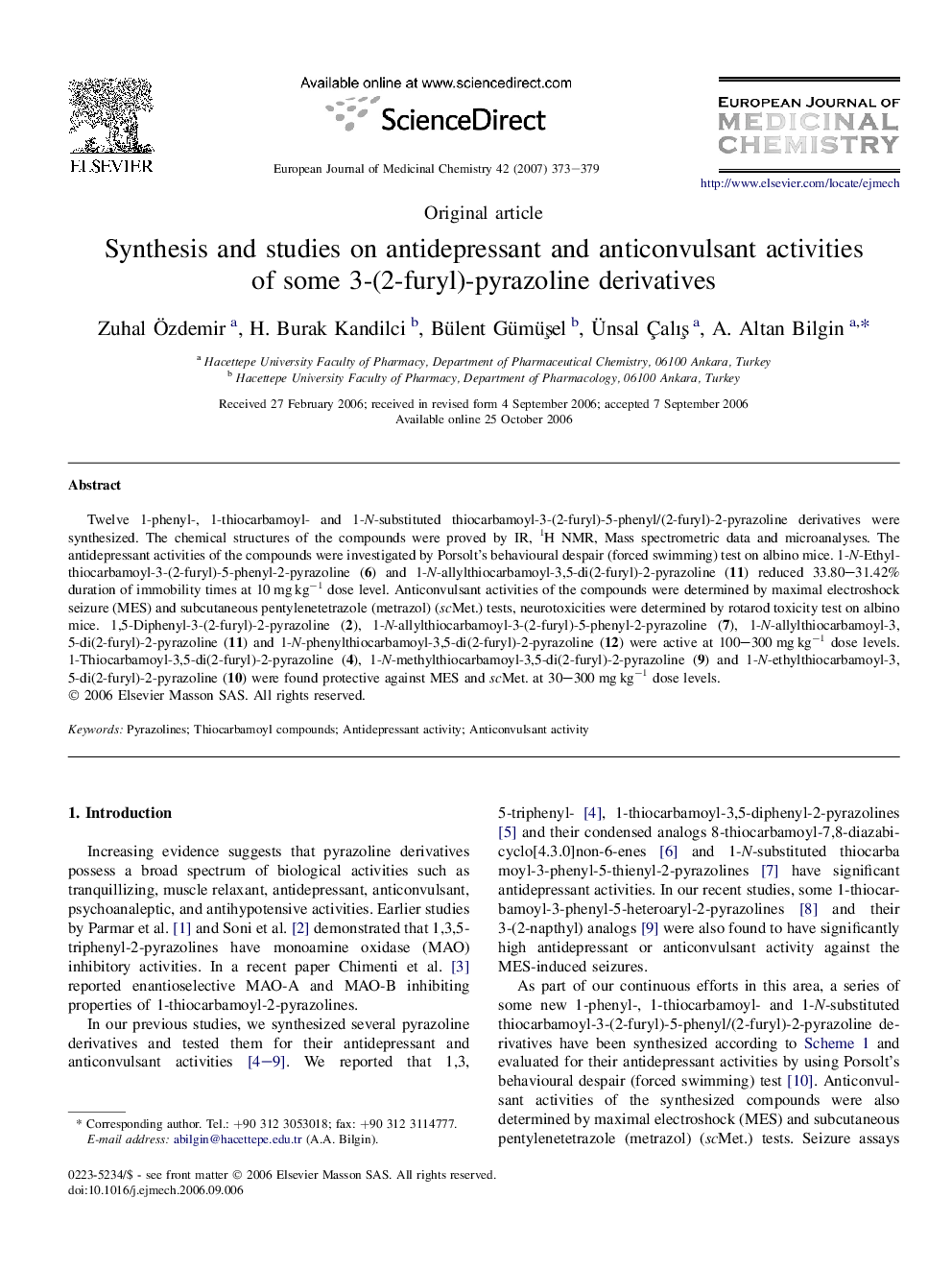| Article ID | Journal | Published Year | Pages | File Type |
|---|---|---|---|---|
| 1397028 | European Journal of Medicinal Chemistry | 2007 | 7 Pages |
Twelve 1-phenyl-, 1-thiocarbamoyl- and 1-N-substituted thiocarbamoyl-3-(2-furyl)-5-phenyl/(2-furyl)-2-pyrazoline derivatives were synthesized. The chemical structures of the compounds were proved by IR, 1H NMR, Mass spectrometric data and microanalyses. The antidepressant activities of the compounds were investigated by Porsolt's behavioural despair (forced swimming) test on albino mice. 1-N-Ethylthiocarbamoyl-3-(2-furyl)-5-phenyl-2-pyrazoline (6) and 1-N-allylthiocarbamoyl-3,5-di(2-furyl)-2-pyrazoline (11) reduced 33.80–31.42% duration of immobility times at 10 mg kg−1 dose level. Anticonvulsant activities of the compounds were determined by maximal electroshock seizure (MES) and subcutaneous pentylenetetrazole (metrazol) (scMet.) tests, neurotoxicities were determined by rotarod toxicity test on albino mice. 1,5-Diphenyl-3-(2-furyl)-2-pyrazoline (2), 1-N-allylthiocarbamoyl-3-(2-furyl)-5-phenyl-2-pyrazoline (7), 1-N-allylthiocarbamoyl-3,5-di(2-furyl)-2-pyrazoline (11) and 1-N-phenylthiocarbamoyl-3,5-di(2-furyl)-2-pyrazoline (12) were active at 100–300 mg kg−1 dose levels. 1-Thiocarbamoyl-3,5-di(2-furyl)-2-pyrazoline (4), 1-N-methylthiocarbamoyl-3,5-di(2-furyl)-2-pyrazoline (9) and 1-N-ethylthiocarbamoyl-3,5-di(2-furyl)-2-pyrazoline (10) were found protective against MES and scMet. at 30–300 mg kg−1 dose levels.
Graphical abstractSeveral 3-(2-furyl)-2-pyrazoline derivatives were synthesized and evaluated for their antidepressant and anticonvulsant activities. Our pharmacological results indicate that they seem to be really promising compounds for their anticonvulsant activities.Figure optionsDownload full-size imageDownload as PowerPoint slide
